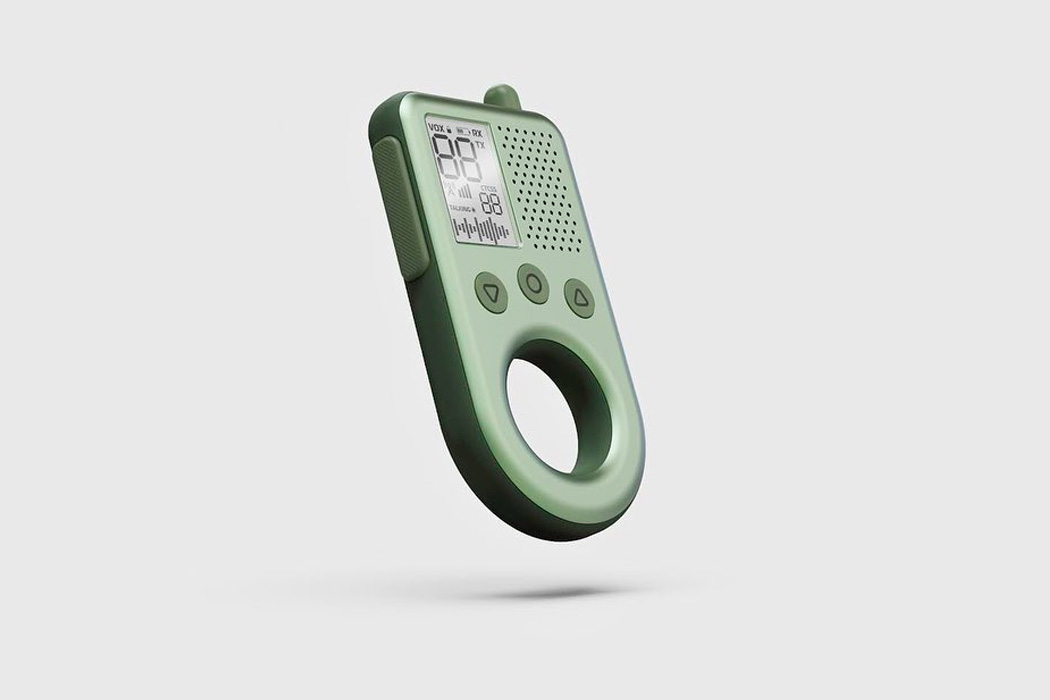
Scroll through the walkie-talkie archives ever since their inception around the Second World War, and typically what you will see is a brick phone-like device with the microphone on one end and a speaker on the other, topped off by an antenna. These two-way radios have now evolved to include certain function buttons and LCDs. One thing that remains unattended mainly is the way to carry it. Walkie-talkies are either tied to a sling, wrapped around the wrist, fastened to the belt, or the shoulder strap. As a more innovative way – to highlight its transport – Franco Calegari has designed a walkie-talkie with the bottom half of the device cut out into a hollow ring, which can be used to attach a carabiner or in a range of other ways.
The primary responsibility of a walkie-talkie is to be a portable communication device. “Designed to be carried at any time, in many different ways,” this walkie-talkie can be used in any industry or organization where instantaneous communication between peers is required, and phone signals are unreliable. These would generally include security services, transportation industry, construction sites, manufacturing, and warehouse facilities amid a few other sectors. The fact is that walkie-talkies are easy to use and have grown beyond commercial use into the lives of the masses. Smaller versions are especially very popular among kids.
If you already use a walkie-talkie at work or otherwise, coordinate with colleagues or keep tabs of children when out on a camping site; you know they usually fall short on handling. This conceptual walkie-talkie can hang through a keychain or carabiner and open up more use case scenarios for you. Though we aren’t sure of what range or how many channels this gadget will support but its compact form factor with a large push-to-talk button on the side and LCD on the façade, it is a refreshing take on the otherwise brick-like design!
Designer: Franco Calegari